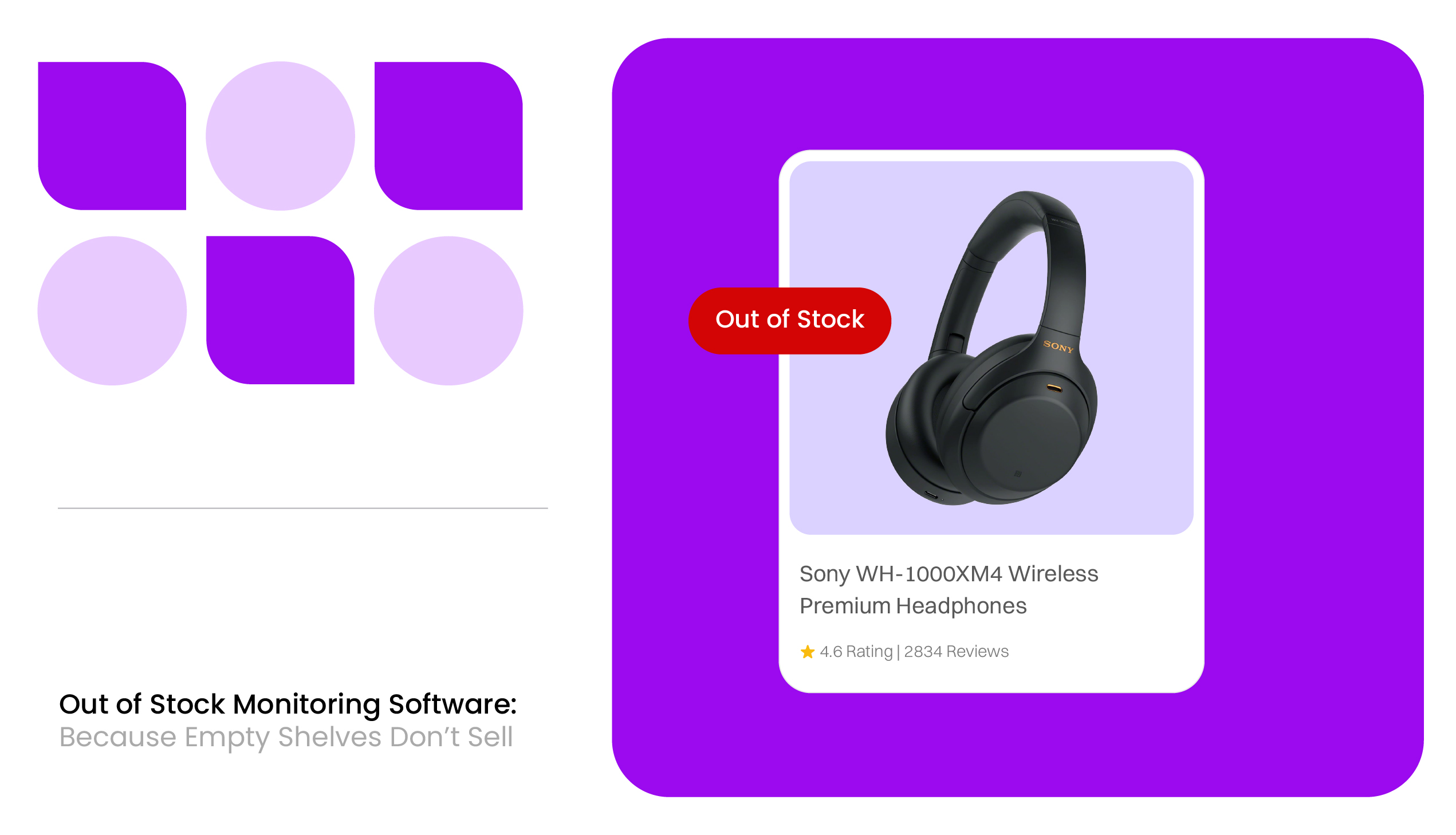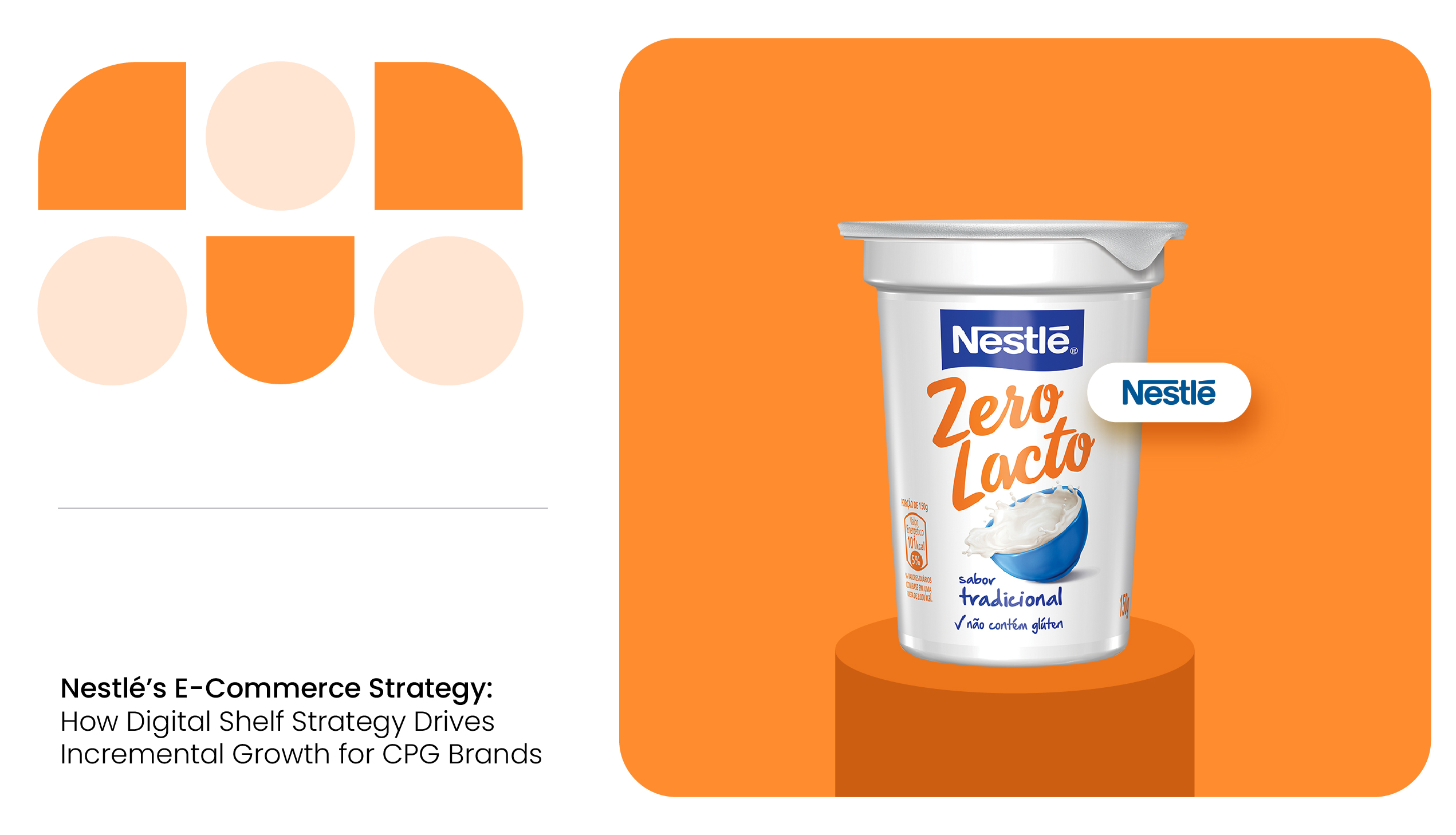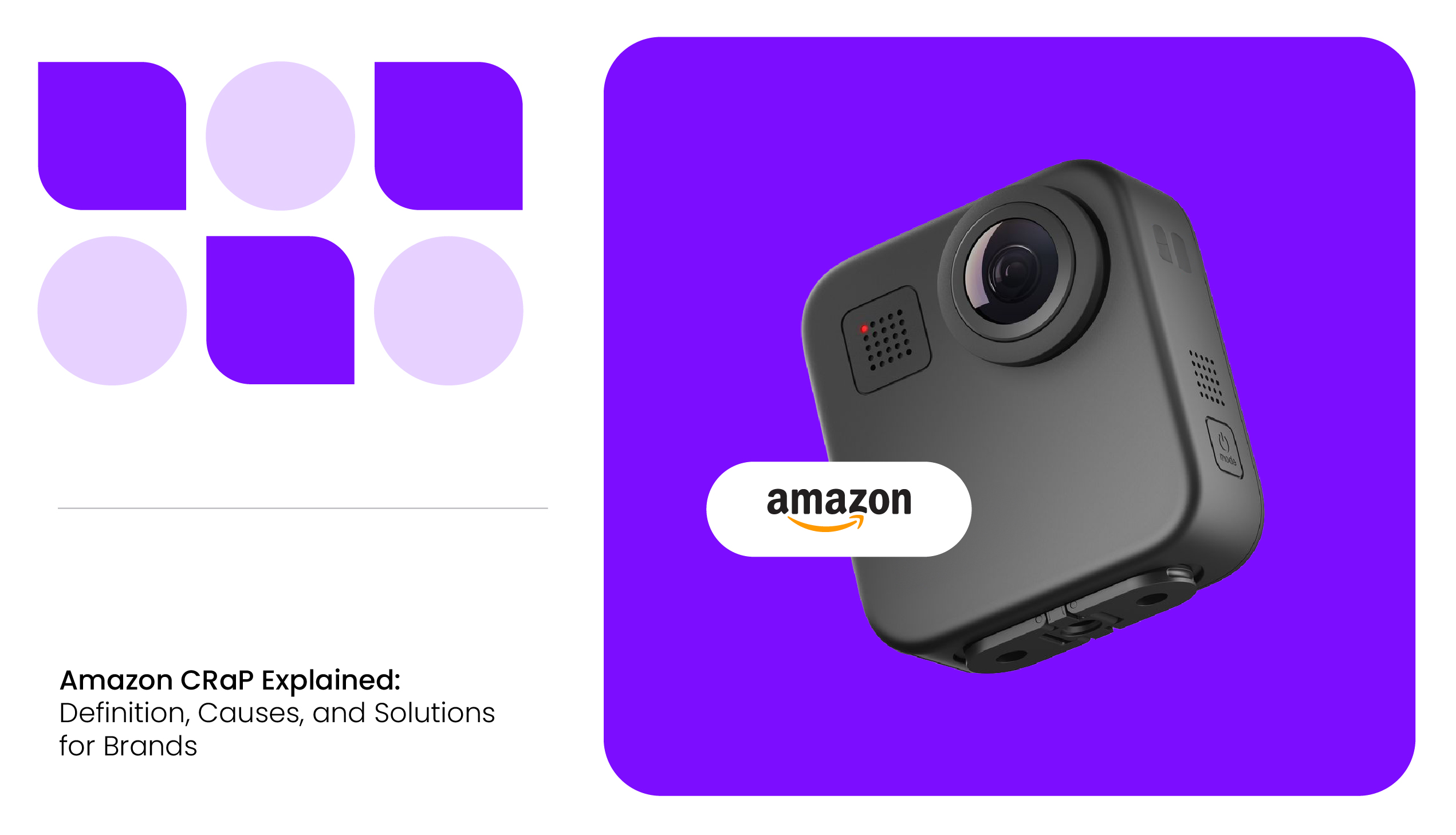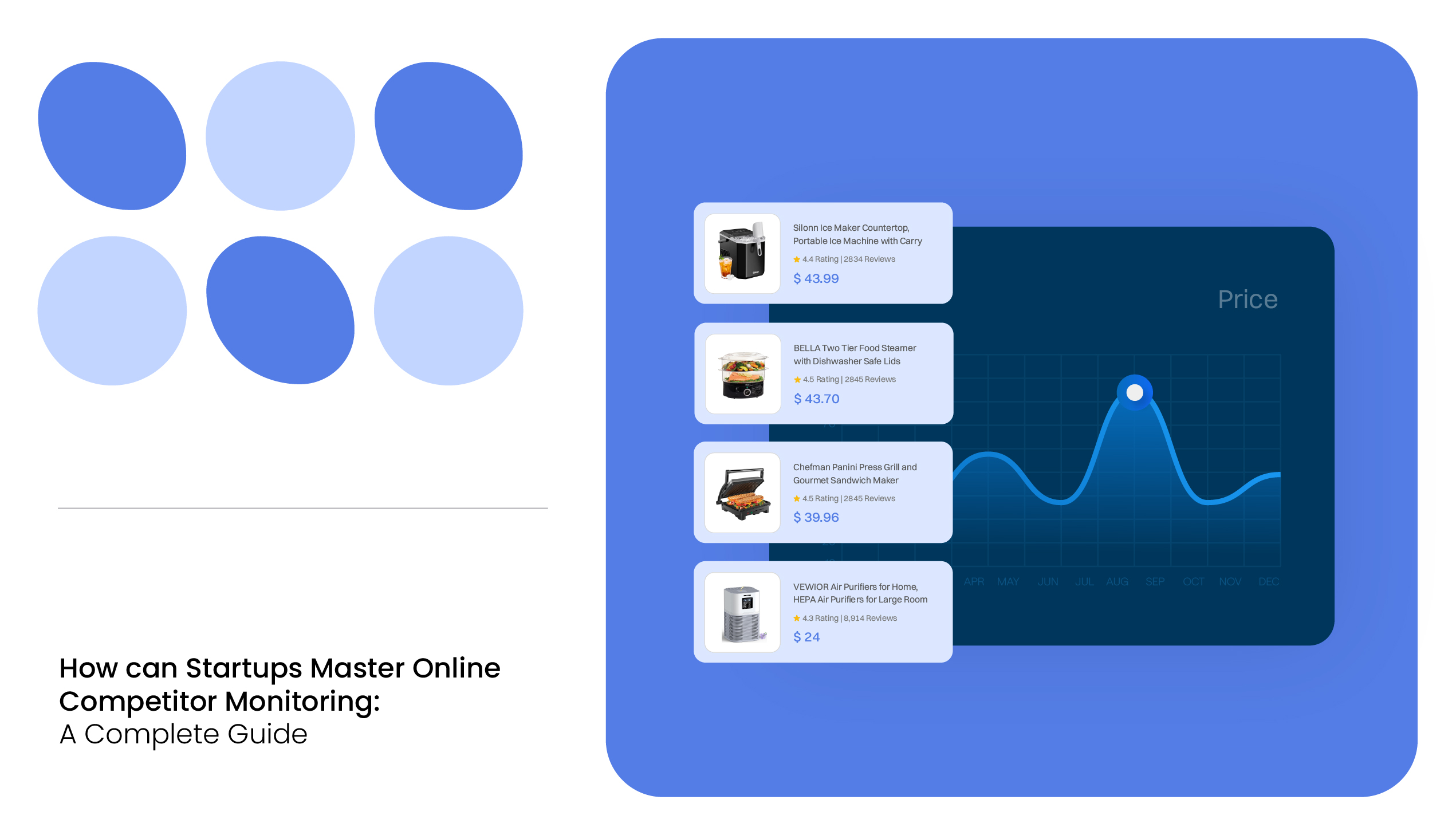Picture this: a customer lands on your e-commerce store, ready to purchase a product they’ve been researching, only to find an “Out of Stock” message. Disappointed, they head to a competitor’s site, and you’ve lost not just a sale but potentially a loyal customer.
Research from IHL Group shows stockouts cost retailers over $1 trillion globally each year in lost sales. For e-commerce brands, where seamless shopping experiences are critical, preventing stockouts is essential.
This is where out of stock monitoring software like MetricsCart shines. In this guide, we’ll explore why it is vital, its impact on sales and reputation, and why MetricsCart is a top choice for online availability monitoring.
What Is Online Out-of-Stock Monitoring?
In the simplest terms, online out-of-stock monitoring is the process of tracking product availability across all of your online sales channels. This includes your website, third-party marketplaces like Amazon or eBay, and any other digital touchpoints where you sell products.
The idea is to stay on top of your inventory in real time, ensuring that products that are in demand are always available for purchase, and when something is running low or out of stock, you can take action immediately.
Let’s say you have a skincare brand and you sell across Walmart, Target, and Amazon. If your moisturizer starts dipping below 20 units on Amazon, the system can immediately send you an alert, long before customers see “currently unavailable”. This way, you can restock in time or adjust your marketing campaigns to avoid promoting a product that’s nearly gone.
Out of stock monitoring software ensures that you have up-to-date visibility into your stock levels, automates alerts when products need restocking, and helps you make better decisions about inventory management.
And if you’re selling across multiple marketplaces, omnichannel out of stock monitoring ensures your stock data is consistent everywhere. No more situations where an item looks “in stock” on one platform but is sold out on another.
Why Do Stockouts Happen in E-Commerce?
Stockouts might feel like random accidents, but there are usually clear reasons behind them:
- Supply Chain Disruptions: Remember early in the pandemic when household items like sanitizers and cleaning wipes vanished overnight? Even big brands like Clorox couldn’t keep up because their supply chains couldn’t handle the sudden spike in demand. Disruptions like shipping delays, factory backlogs, or customs hold-ups can quickly empty your inventory.

In episode 3 of Digital Shelf Insider by MetricsCart, François Maingret, e-commerce department manager at Cleanis, shared his expertise on seasonal e-commerce trends, brand strategies, and the innovations driving success on the digital shelf. Listen to the full episode here:
- Fluctuating Demand: E-commerce moves fast. A TikTok influencer might post about your product, and suddenly orders skyrocket. If you’re not tracking availability in real-time, you’ll sell out before you even realize what’s happening.
- Inaccurate Forecasting: Many brands rely on last year’s sales data to predict this year’s demand. But what if this year’s trends shift? For example, a new color or size of your best-selling sneaker might blow up, while the old version sits unsold. Without precise monitoring, you’ll misallocate stock and lose sales.
- Manual Inventory Tracking: Let’s be real; spreadsheets can’t keep up with modern e-commerce. If you’re manually updating stock across Amazon, Shopify, and eBay, errors are bound to happen. One mistake, and you could oversell or disappoint customers.
Each of these issues shows why stockouts aren’t just bad luck; they’re the result of gaps in visibility. That’s where an online availability monitoring tool like MetricsCart helps. We’ll talk about that in detail as you keep scrolling through.
READ MORE | Winning in e-commerce means more than just being present online! Check out Digital Shelf Monitoring for CPG: 5 Best Practices to Follow in 2025
How Do Stockouts Impact Your Business?
Stockouts don’t just sting in the moment; they create ripples that extend far beyond the initial missed sale. Let’s walk you through this:
- Lost Revenue: Let’s put it into perspective: the average modern retailer loses around 4% of total sales because of stockouts. That might sound modest, but if your store brings in $1 million annually, that’s $40,000 slipping right through your fingers, just because a product wasn’t available.
Customer Frustration and Abandonment: Nothing kills momentum faster than a product going out of stock at checkout, or worse, after you’ve spent time comparing options and making a decision. According to a recent study, nearly 69% of online shoppers will abandon their purchase if an item is out of stock and go directly to a competitor. That’s more than two-thirds of ready-to-buy customers walking away.
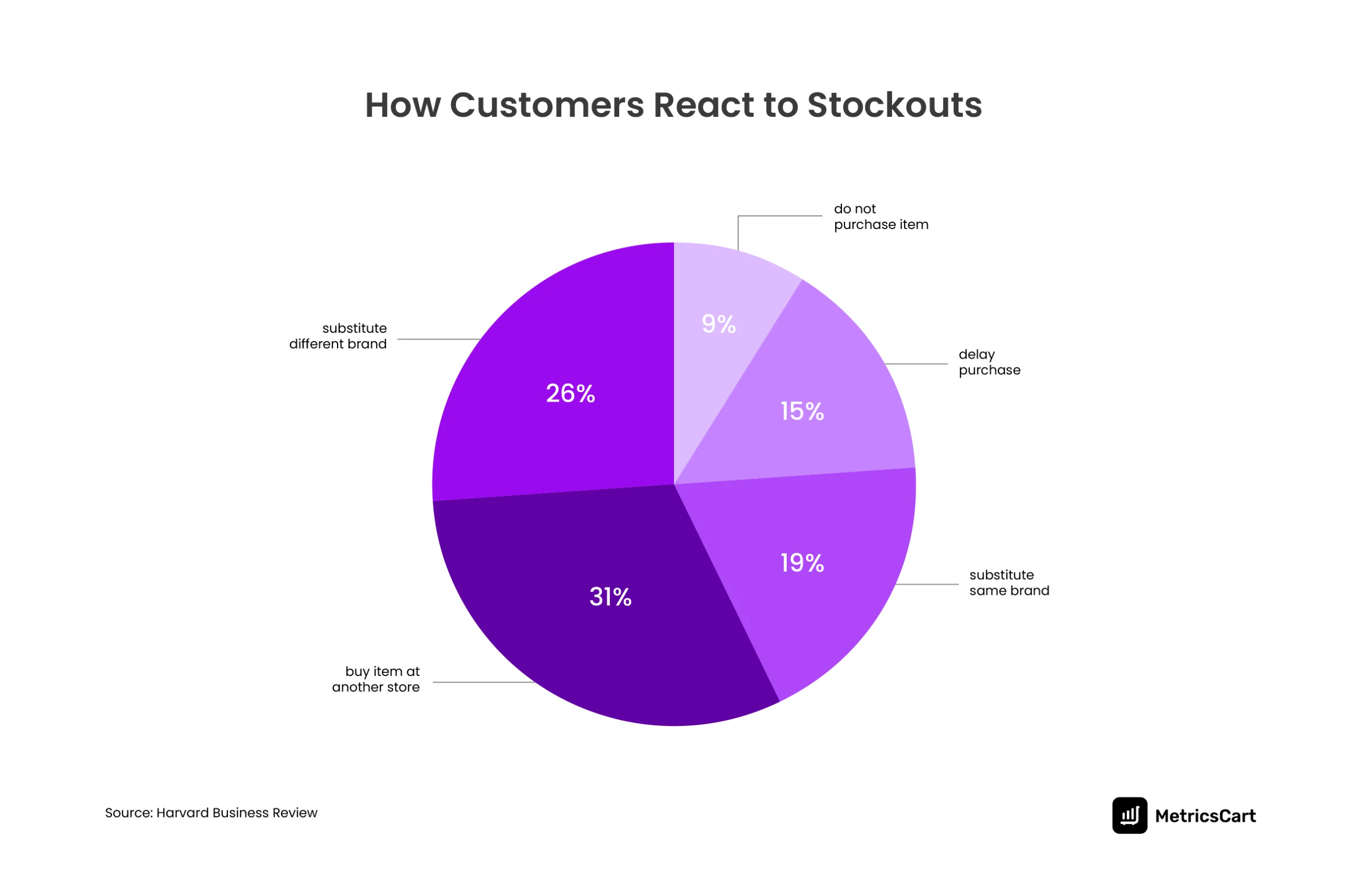
- Brand Loyalty Damage: Following their frustration, stockouts also chip away at customer trust. A Bain study found that poor availability can make customers twice as likely to permanently switch to another brand. If it keeps happening, especially for high-demand items or recurring purchases, substitution becomes permanent.
- Operational Inefficiencies: When inventory runs dry, the scramble begins: emergency supplier orders, expedited shipping costs, reactive restocking, and the financial stress that comes with it. Not to mention the risk of overordering other products “just in case,” which increases carrying costs and piles up excess inventory.
With each of these consequences, stockouts disrupt revenue predictability, damage customer experience, and compromise operational stability, forcing your team into costly, reactive fixes that divert focus from long-term growth.
Monitoring out of stock in e-commerce isn’t just an inventory management subset; it’s ensuring the complete safeguarding of your brand’s profits and online reputation.

How Out of Stock Monitoring Software Solves the Problem
Okay, so here’s the thing about using out of stock monitoring software: it’s not just a safety net that tells you when products are gone; it’s a proactive growth tool that helps you avoid stockouts altogether.
Imagine you’re running a mid-size fashion brand on Shopify and Amazon. One of your dresses goes viral after a celebrity shoutout on Instagram. Without omnichannel out of stock monitoring, you might not notice inventory draining until it’s too late. But with monitoring software in place, you’d get a real-time alert as stock levels dip.
That gives you options: reorder faster, boost ad spend on that SKU, or even redirect shoppers to a similar product, protecting both sales and customer experience.
Here’s how monitoring out of stock in e-commerce boosts business performance:
- Proactive Alerts That Buy You Time: Instead of waiting for angry customers to flag a stockout, you’re automatically warned well before it happens. That time buffer means fewer lost sales and smarter decision-making.
- Omnichannel Visibility for Better Control: Whether it’s your DTC site, Amazon, or Walmart, all stock data flows into one dashboard. No more logging into different platforms or reconciling spreadsheets; automation does the heavy lifting, so your team can focus on scaling.
- Smarter Demand Forecasting: By analyzing sales velocity and historical data, the software can predict when items will run out. This transforms inventory tracking from a guessing game into a strategy, letting you plan campaigns and supplier orders with confidence.
- Revenue Protection & Growth: Stockouts don’t just cost you immediate sales; they hurt lifetime value and brand loyalty. By automating online product availability tracking, you keep products live during peak demand moments, capture every possible dollar, and strengthen long-term customer relationships.
Instead of reacting to problems, you’ll be using real-time insights to make faster, smarter, and more profitable decisions.
READ MORE | The right product mix is key to e-commerce success. Check out Overcoming Product Assortment Challenges With MetricsCart to know more.
Why Is MetricsCart the Best Out Of Stock Monitoring Software?
When it comes to avoiding costly stockouts, not all monitoring tools are created equal. The best out-of-stock monitoring software should do more than just tell you when an item is gone; it should help you to stay ahead of demand and even spot hidden opportunities. Here’s what matters most:
Real-Time Tracking Across Channels: Delayed data is as good as no data. You need second-by-second stock visibility across Amazon, Walmart, Target, and your own store so nothing slips through the cracks. This is exactly where MetricsCart shines, providing live updates across every channel you sell on.
Smart, Custom Alerts: The ability to set your own thresholds (say, “alert me when this SKU drops below 25 units”) keeps you one step ahead. MetricsCart sends you instant notifications long before a product is officially out of stock, giving you time to reorder or adjust promotions.
Advanced Analytics: It’s not enough to know what’s in stock; you need insights into sales velocity, demand forecasting, and where you’re losing share. MetricsCart goes further by analyzing demand patterns, highlighting your best movers, and warning you when something’s about to run out.
Competitor Stockout Insights: This is a game-changer. A top-tier tool should also track your competitors’ availability. If a rival brand’s best-selling sneaker suddenly sells out, that’s your chance to push a similar SKU front and center. MetricsCart helps you spot these openings in real time so you can capture demand when others can’t fulfill it.
Seamless Integration: The last thing you need is a clunky setup. The best software should plug directly into Shopify or Amazon Seller Central. MetricsCart is built with easy integrations, so you can start monitoring availability across platforms almost instantly.
For brands serious about monitoring out of stock in e-commerce, MetricsCart isn’t just a safety net; it’s a growth enabler.
Final Notes
The funny thing about stockouts is that no one ever plans for them. Nobody in a strategy meeting says, “You know what would really help us win market share? Running out of our best-seller on Black Friday.”
And yet… here we are.
Well, the good thing is, stockouts are actually one of the easiest problems to fix in e-commerce. With the right online availability monitoring software, you don’t have to cross your fingers and hope your inventory holds. You can know when it’s dipping, get nudged before it’s gone, and even see when your competitors are running dry, so you can be the brand that’s ready when shoppers come looking.
MetricsCart‘s online out of stock monitoring software is a practical, real-time guardrail that gives you visibility, alerts, and competitor insights; all so you can stop losing sales to “Sorry, we’re out of stock.”
Get in touch today to book your free demo!
Every Second Counts! Strengthen Your Business With Our Digital Shelf Solutions.
FAQs
Stock monitoring is the process of keeping track of your product availability across different sales channels in real time. In e-commerce, this often means using out of stock monitoring software to automatically check when products are running low or unavailable, so you can restock before customers notice. Think of it as an early warning system that helps you avoid empty shelves online.
Stockouts don’t just mean missed sales in the short term; they can damage your brand in the long run. When customers see that a product they want is unavailable, they rarely wait around. Instead, they click away to a competitor. Studies show that nearly half of online shoppers won’t return to a brand after multiple stockout experiences. This makes monitoring out of stock in e-commerce essential to protect both your revenue and your reputation.
Yes! The best solutions are designed for omnichannel out of stock monitoring, meaning they track inventory across Amazon, Walmart Marketplace, eBay, your own e-commerce store, and even social commerce channels. Instead of juggling multiple dashboards, you get one centralized view of your product availability everywhere you sell.
Any e-commerce business selling across multiple platforms can benefit. This includes:
1. Direct-to-consumer (DTC) brands managing their own sites
2. Marketplace sellers on Amazon, Walmart, and eBay
3. Large e-commerce retailers with big catalogs
4. Brand managers and digital shelf teams who want visibility into competitor availability
Basically, if your products can sell out online, you need online availability monitoring to stay ahead.
Yes, and this is one of the most underrated advantages. The best out-of-stock monitoring software doesn’t just track your inventory; it also keeps an eye on your competitors. With MetricsCart, competitor stockout monitoring is built right in, giving you actionable insights for growth.

